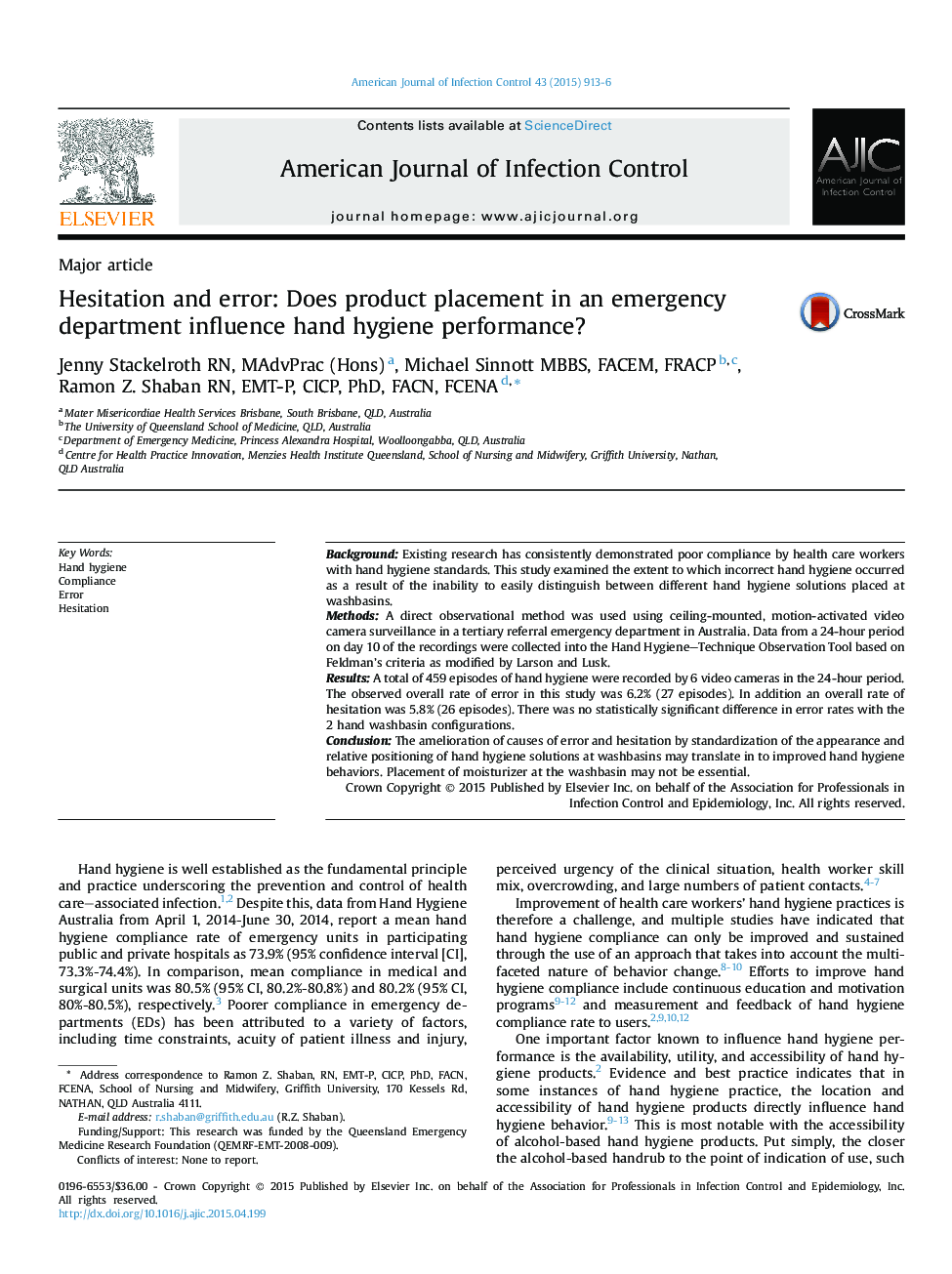| کد مقاله | کد نشریه | سال انتشار | مقاله انگلیسی | نسخه تمام متن |
|---|---|---|---|---|
| 2636713 | 1563468 | 2015 | 4 صفحه PDF | دانلود رایگان |
BackgroundExisting research has consistently demonstrated poor compliance by health care workers with hand hygiene standards. This study examined the extent to which incorrect hand hygiene occurred as a result of the inability to easily distinguish between different hand hygiene solutions placed at washbasins.MethodsA direct observational method was used using ceiling-mounted, motion-activated video camera surveillance in a tertiary referral emergency department in Australia. Data from a 24-hour period on day 10 of the recordings were collected into the Hand Hygiene–Technique Observation Tool based on Feldman's criteria as modified by Larson and Lusk.ResultsA total of 459 episodes of hand hygiene were recorded by 6 video cameras in the 24-hour period. The observed overall rate of error in this study was 6.2% (27 episodes). In addition an overall rate of hesitation was 5.8% (26 episodes). There was no statistically significant difference in error rates with the 2 hand washbasin configurations.ConclusionThe amelioration of causes of error and hesitation by standardization of the appearance and relative positioning of hand hygiene solutions at washbasins may translate in to improved hand hygiene behaviors. Placement of moisturizer at the washbasin may not be essential.
Journal: American Journal of Infection Control - Volume 43, Issue 9, 1 September 2015, Pages 913–916
